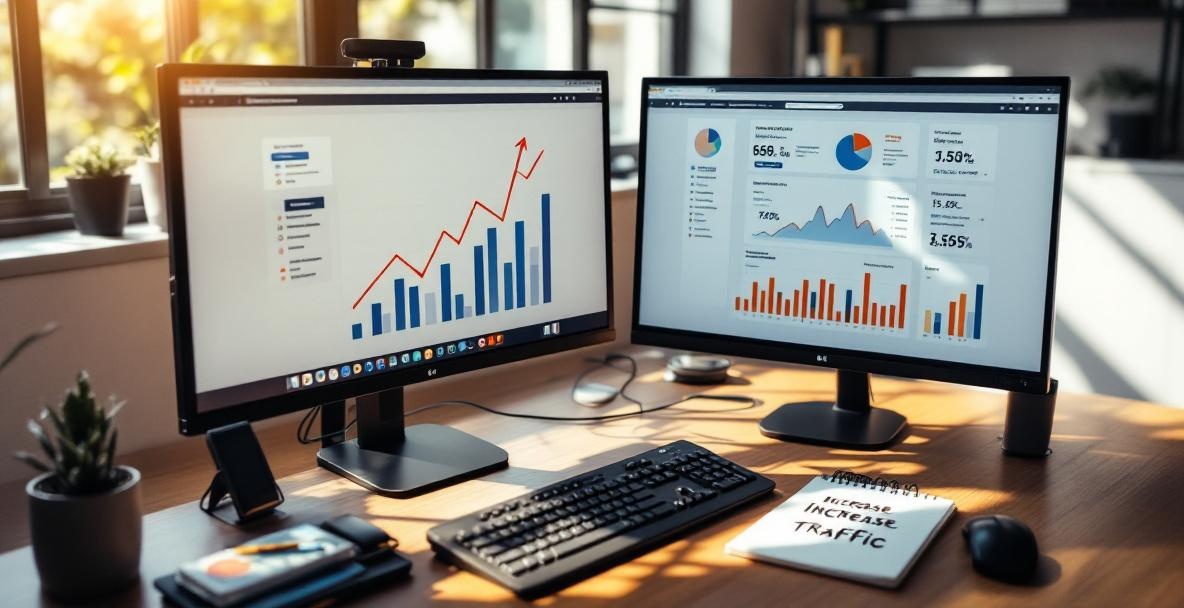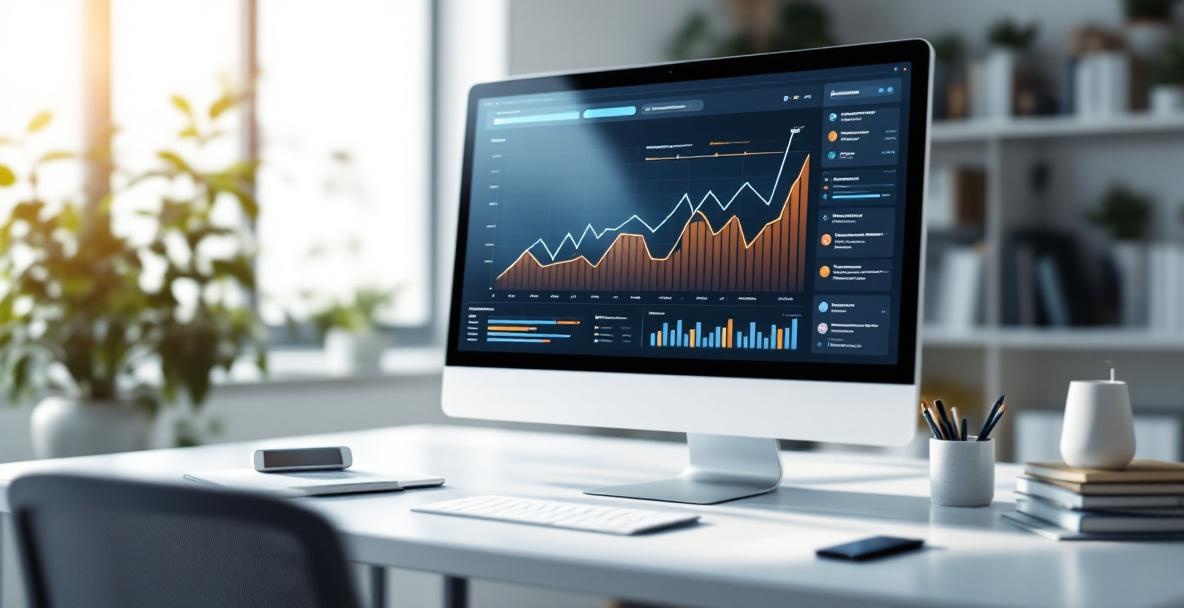Why Are Visitors Leaving Your Site So Quickly?

You have spent endless hours perfecting your website and filling it with quality information, yet people leave almost as soon as they arrive. This isn’t just in your head but a real issue measured by your bounce rate. At SeoFlow, we’ve seen many business owners struggle with this problem, and we know that fixing it by using smart bounce rate reduction techniques can make all the difference in keeping visitors around and boosting your search rankings.
Actionable insight: Focus on matching page content with user intent to lower bounce rate quickly.
What Does Bounce Rate Mean?
Bounce rate tells you what percentage of visitors come to your website and then leave without taking any further action. Think of it like walking into a shop, glancing around, and then leaving without exploring. In online terms, someone clicks your link from search results, spends a few seconds on your page, and then closes the tab.
For example, if 100 people visit your homepage and 65 leave without clicking around, your bounce rate is 65%. This number can change a lot depending on your website type. Blogs often see higher rates because visitors might read one post and move on. In many cases, bounce rates fall between 40-60%, while figures over 70% signal that something needs fixing.
Average Bounce Rate Benchmarks by Industry
| Industry | Low (Good) | Average | High (Needs Attention) |
|---|---|---|---|
| Blogs & News | 40% | 65% | 80%+ |
| B2B SaaS | 25% | 45% | 60%+ |
| E-Commerce | 20% | 35% | 55%+ |
| Lead Gen Landing Pages | 30% | 50% | 70%+ |
Use these benchmarks as a guide to see where your website stands and where you might improve.
Bounce rate gives you a clear snapshot of how well your page connects with its visitors. With a few smart changes and by applying proven effective engagement strategies, you can truly transform your website’s performance.
Why a High Bounce Rate Is a Red Flag
A high bounce rate over and over is a clear sign that something is off. It shows that what visitors expect does not match what they find when they land on your page. If people leave without digging deeper, it means they are not seeing the value they hoped for-whether it’s useful information, attractive products, or helpful solutions.
It also affects your visibility on search engines like Google. When users leave quickly, search engines assume your page might not be what they are looking for and may lower your ranking. This creates a cycle where fewer people see your site, and less engagement makes it even harder to perform well in search results. Every visitor who bounces is a missed chance for a sale or sign-up, and in the long run, it can seriously hurt your return on investment. Focusing on aligning with search intent as described in this article is a key step to remedy this.
Speed Matters – Can Your Website Load Fast Enough?

When someone clicks on your site, you have only a few seconds to grab their attention. Research at SeoFlow shows that even a short delay in load time can cost you a visitor. A slow page not only frustrates users but also harms your search rankings. The good news is that making your site faster can be simple and very effective in keeping your readers engaged.
How Your Load Time Affects Visitor Behavior
| Time to First Interaction | Bounce Probability Increase |
|---|---|
| 0-1 second | Baseline |
| 1-3 seconds | +32% |
| 3-5 seconds | +90% |
| 5-10 seconds | +123% |
| 10+ seconds | Almost guaranteed exit |
Focus on reducing delays, especially within the critical first 3 seconds, to see a noticeable change.
Speed Up Your Images
Large image files are a common culprit for slow loading times. Many of us upload heavy files straight from our cameras or stock sites without thinking twice, and this extra weight makes visitors wait. The fix is straightforward: resize and compress your images before uploading them. There’s little reason to upload a 4000-pixel-wide image when your page only shows it at 800 pixels wide. Tools like Adobe Photoshop, GIMP, or online services such as TinyPNG can help you shrink file sizes without losing quality.
Switching to modern formats like WebP can lower file sizes even more dramatically. Most browsers support WebP, and in cases where they don’t, you can always provide a fallback. This approach keeps your site fast without sacrificing the visual appeal that draws people in.
Make Use of Browser Caching
A simple way to speed up your website is through browser caching. This technique instructs visitors’ browsers to store files like images, CSS, and JavaScript locally, so they don’t need to be downloaded again on every visit. For WordPress users, plugins like WP Rocket or W3 Total Cache can handle this for you. If your site is on another platform, adding a few lines to your server’s configuration can achieve the same result.
Browser caching means that returning visitors get a much quicker loading experience. Combined with other speed tweaks, this small change can lead to significantly lower bounce rates and a happier audience.
Creating Content That People Love

Once your site loads quickly, the next challenge is to offer content that truly captivates your visitors. The best strategy is to craft engaging content that speaks directly to their needs and interests. Without this connection, even a fast-loading site will miss the chance to keep readers coming back.
Without the right content, even a lightning-fast site will see visitors slip away quickly.
Craft Headlines That Grab Attention
Your headline is the first impression you make, and it should grab the reader’s attention immediately. It’s like the hook on a favorite song-simple, clear, and engaging. A headline that spells out exactly what you offer, such as "5 Data-Backed Ways to Reduce Cart Abandonment by 30%", sets the right expectations. Avoid vague or misleading titles that might snag a click but fail to deliver on their promise.
Try out different styles until you find one that feels natural and inviting. Whether you use numbers, questions, or a straightforward how-to hint, the goal is to interest your visitors and encourage them to discover more.
Make Your Page Easy to Read
Even brilliant content can be overlooked if the page looks like a solid block of text. Break your writing into shorter paragraphs with plenty of white space to give your eyes some room to rest. Using bold phrases for key points and clear subheadings helps guide readers through your post without overwhelming them.
Consider these simple formatting tips:
- Clear subheadings to divide your text
- Bullet points for important takeaways
- Relevant images to illustrate key ideas
- Varied sentence lengths for a natural flow
The table below shows how much these changes can boost the time readers spend on your page:
| Formatting Enhancement | Avg. Time on Page Lift | Notes |
|---|---|---|
| Subheadings every 300 words | +12% | Helps scanning |
| Bullet/Numbered Lists | +18% | Breaks monotony |
| Contextual Images | +24% | Provides visual aid |
| Video Embed (<2 min) | +37% | Boosts dwell time |
| Interactive Infographic | +45% | Encourages sharing |
These formatting tweaks not only make your content look better but also keep your readers engaged for longer periods.
Fine-Tune Your Site Navigation

Even if your content is top-notch, a confusing website can drive people away. If visitors struggle to find what they need, they will quickly move on. A clear, logical layout helps your audience feel comfortable as they explore your site, reducing frustration and keeping them engaged for longer.
A confusing site structure is like a maze without a map – visitors get frustrated and leave quickly.
Organize Your Site for Easy Browsing
When your website feels cluttered, visitors won’t know where to look next. The trick is to simplify your layout, much like arranging a neat store where every section is clearly labeled. Keep your main menu short-no more than 5-7 items-so readers can quickly decide where they want to go. Streamlining your navigation can reduce bounce rates by up to 15%, based on our experience at SeoFlow.
Ask friends or customers to try finding a few pieces of information on your site. Their feedback might reveal hidden challenges that you can fix to make browsing a breeze.
Create Clear Pathways with Internal Links
Internal links act like helpful signs that direct visitors to other parts of your website. They encourage readers to explore additional articles or resources, turning a single visit into a rich journey. Use these links thoughtfully; when someone is reading about SEO tips, a link to more advanced SEO strategies that build on those fundamentals can feel natural and useful.
A good internal linking structure not only keeps your visitors engaged but also makes your site more valuable in the eyes of search engines.
Wrapping Up: The Road to a Lower Bounce Rate
Lowering your bounce rate takes time and steady effort. This is not just about quick fixes but about creating a website that feels friendly, fast, and full of useful information. Every step, from speeding up load times to offering clear, engaging content, builds a better experience for your visitors.
A Recap of What Works
We began with the importance of a fast-loading site, where every second matters. Tactics like compressing images and leveraging browser caching can significantly cut down load times. Next, we explored how quality content-supported by attention-grabbing headlines and smart formatting-keeps visitors engaged. Finally, simplifying navigation and adding purposeful internal links encourages users to explore further, ensuring they get what they came for.
Keep Tuning Your Site
Putting these improvements in place is only the beginning. The key is to keep monitoring your site’s performance and making adjustments as needed. Tools such as Google Analytics can help you spot pages that need more work. Try small changes like tweaking a headline or adjusting a call-to-action button, and see how visitors respond. Steady improvements over time will lead to a more welcoming site and fewer bounces.
Ready to transform your bounce rates and boost your search rankings with data-driven strategies? At SeoFlow, we've built our platform to help businesses like yours create engaging, optimized content that keeps visitors on your site and converts them into customers. Start your journey toward better user engagement today with our AI-powered SEO tools that make implementing these bounce rate reduction techniques seamless and effective.



